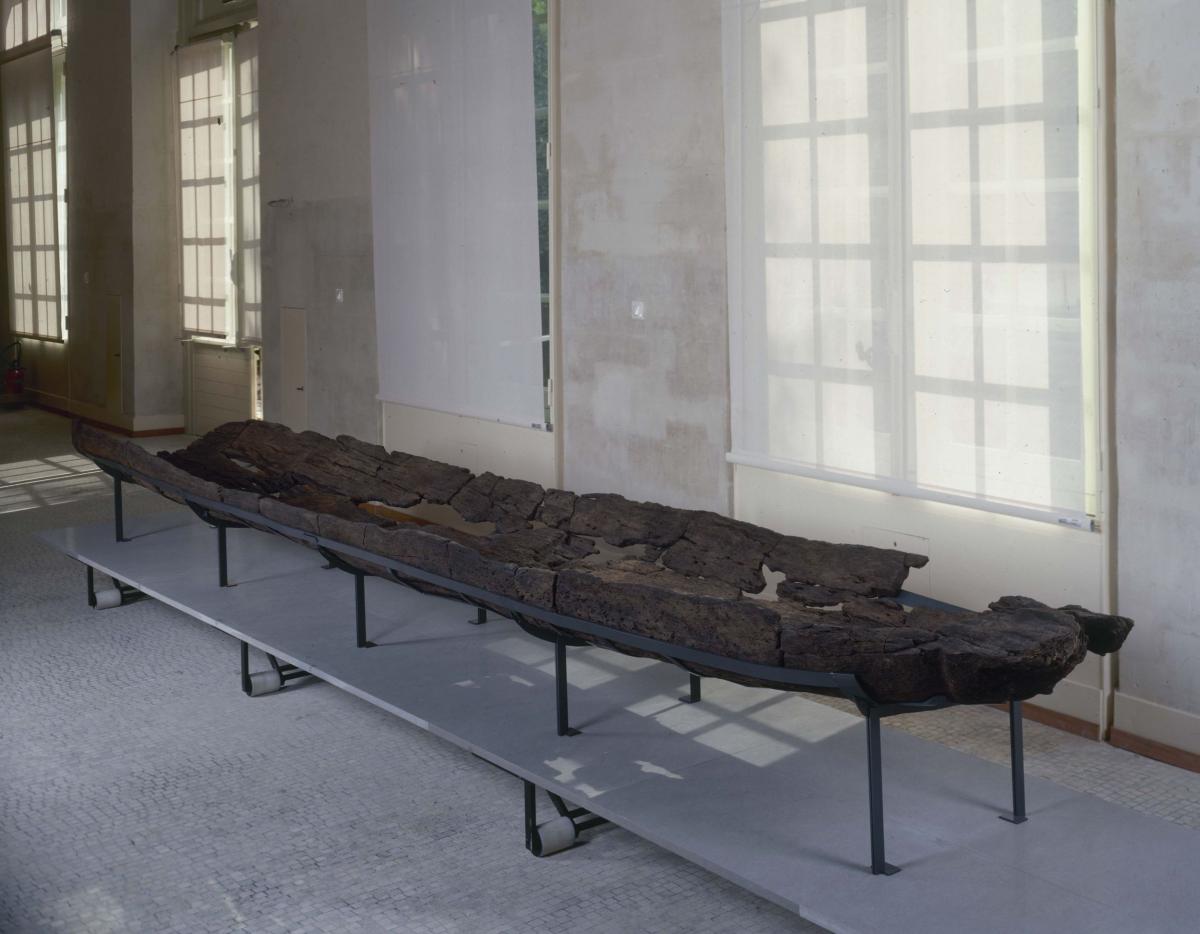Canoe made from a single piece of oak wood
This prehistoric dugout canoe was cut from a sole block of wood. Over five meters of it have been conserved. It was found on the bank of a fossilized arm of the Seine, near a group of Neolithic dwellings. A dozen boats were unearthed during the archeological diggings at Bercy from 1991 to 1992, and they comprise the best-preserved set of prehistoric vessels in Europe.Neolithic peoples lived at the confluence of the Seine and Marne rivers, two major axes of circulation and exchange, in a wooded region where forest and river fauna is abundant.The dugouts were used for fishing and to carry merchandise and agricultural or game products. The bottom was probably covered with grass or branches to absorb water entering the hull, which was unstable because it had no keel. The dugout was also used to carry people from one bank of the river to the opposite one. At the time, the Seine was 200 meters wide and five meters deep.
